Pop-up card of the former Takefu Public Hall
This photo is a pop-up card of the old Takefu Public Hall that was created in October 2005.
That is 18 years ago. Since I made a pop-up card of the former Fukui Bank the other day, I naturally had to review the cards I made in the past. I wanted to fix this card when I looked at it.
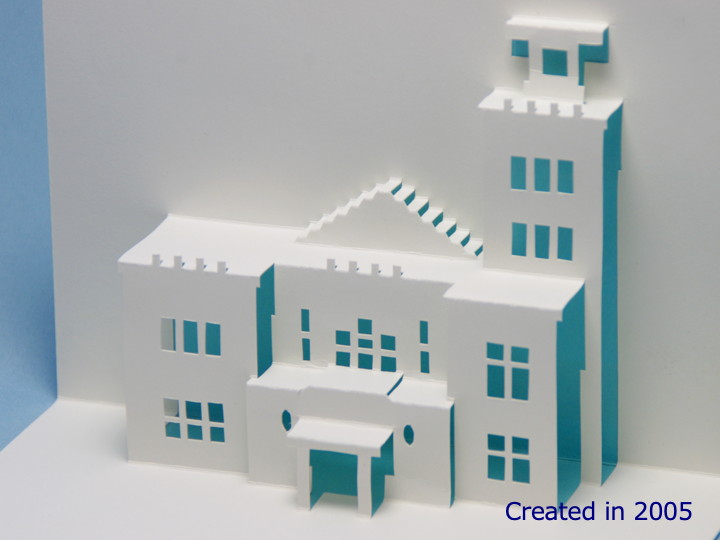
I still have the pattern file, but I can’t even open it now because it was created in AppleWorks at the time. The application sales and support ended in 2007.
Fortunately, I had also saved the pdf file, so I loaded it into Illustrator and started to improve it.
In fact, when I made it in 2005, I did not know that the watchtower on top of the tower was an afterthought, but after checking it out this time, I learned that it was installed in 1950 as a fire watchtower.
Thanks to advances in the National Diet Library’s digital collection, books that previously could only be viewed using the library’s computers can now be viewed at home via a transmission service. So I can view Takefu City History and other books at home, and I am happy to see that both the research environments and computer apps have progressed since 2005.
In Takefu, there used to be a “Nanjo County Public Hall" in the Meiji era, but it was converted to a school building for Takefu Girls’ Business School in 1906. In the Taisho era, a demand for a new public hall was growing, but due to economic problems, it could not be built.
In the Showa period, it was decided to build a new public hall to commemorate the Emperor’s coronation ceremony scheduled for 1928.
Takefu Hospital was located on the proposed site at the time, and its building and land were purchased by Horai Ward, with a portion of the land purchased by Takefu Town for construction. The town was to finance the construction with 20,000 yen, and the rest was to be donated by the residents of the ward and volunteers of the town.
The town managed to get by with a large donation of 25,000 yen from Jin-emon Yamamoto and Kichibei Sato, but it was still a burden for the townspeople, and there were some objections to the plan.
The public hall was designed by katsu Adachi (or may be read differently). He was apparently a Takefu native who had previously worked as an engineer for the Kyoto Prefectural Government.
Construction began in May 1938 and was completed in January of the following year.
It was used as the city office until 1955, when a new building was constructed.
The watchtower for firefighting surveillance was built in 1950 while it was used as the city office.
The card made in 2005 was based on the appearance of the building at that time, so it had a watchtower and sash windows.
In reworking the card this time, I decided to recreate the appearance of the building as it was completed.
This card is the result.
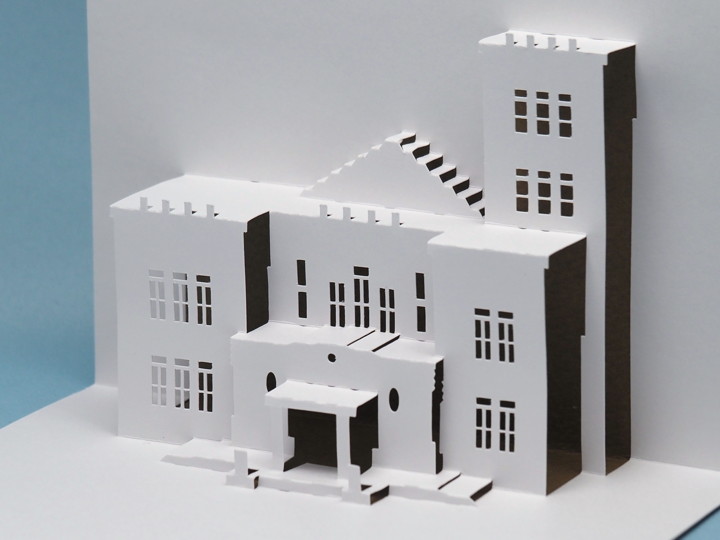
The steps in front of the entrance were made and the windows were made more detailed, so I feel that the size of the building is now more apparent than before.
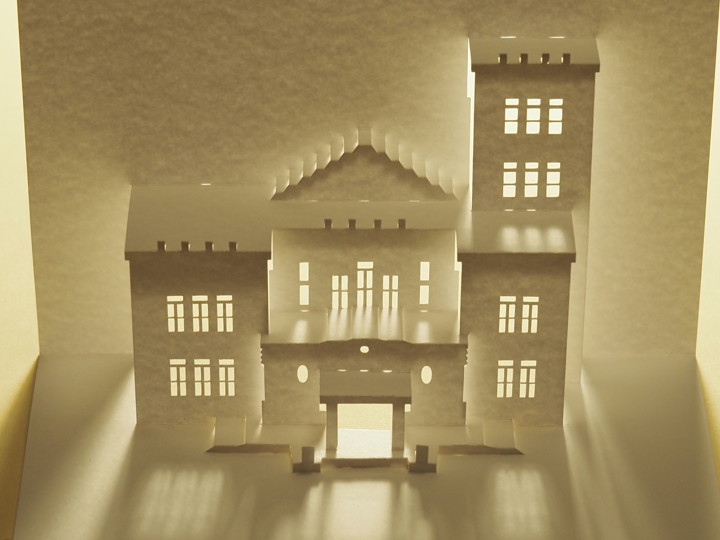
However.
In fact, I had long thought that the reason this card seemed lacking was that the vertical decorations along the windows (the arrows in the photo) were not made in a three-dimensional way.
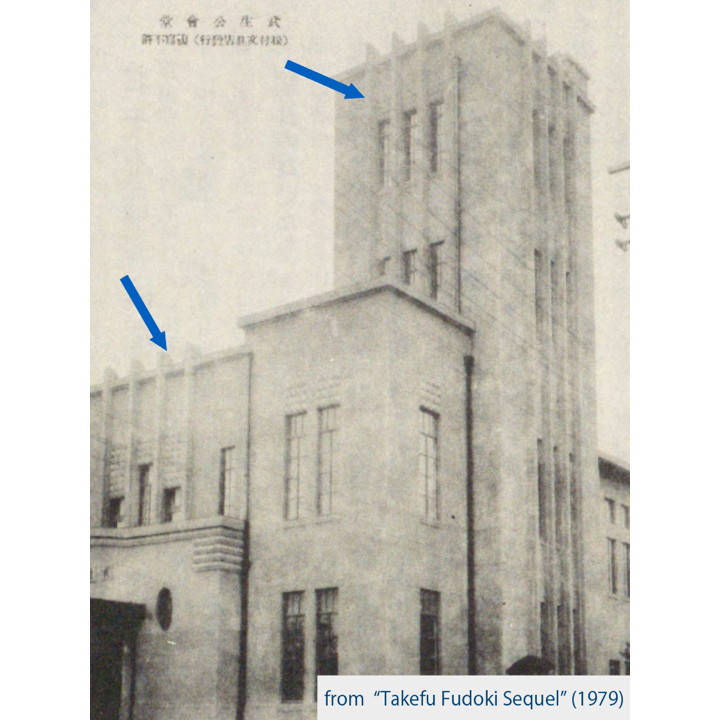
If I tried to make it with a single sheet of paper, the paper would fall apart after cutting out the window, so I decided to make it by gluing separate parts as I often do.
I made these parts and glued them to the main body.
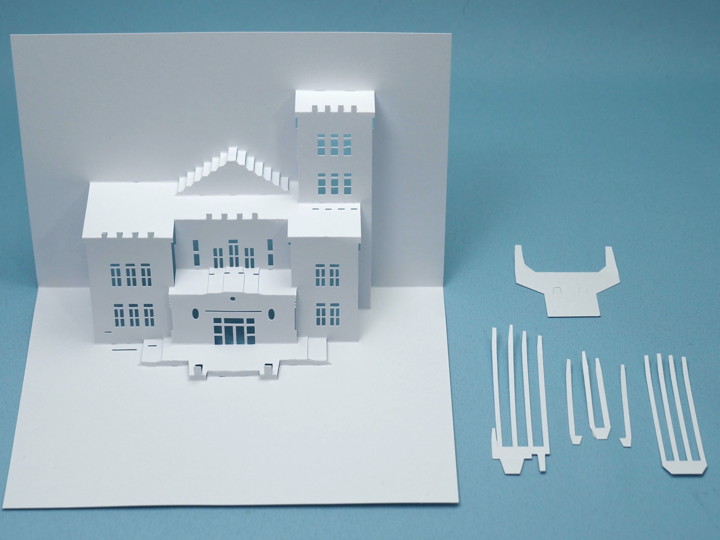
Here is the finished card.
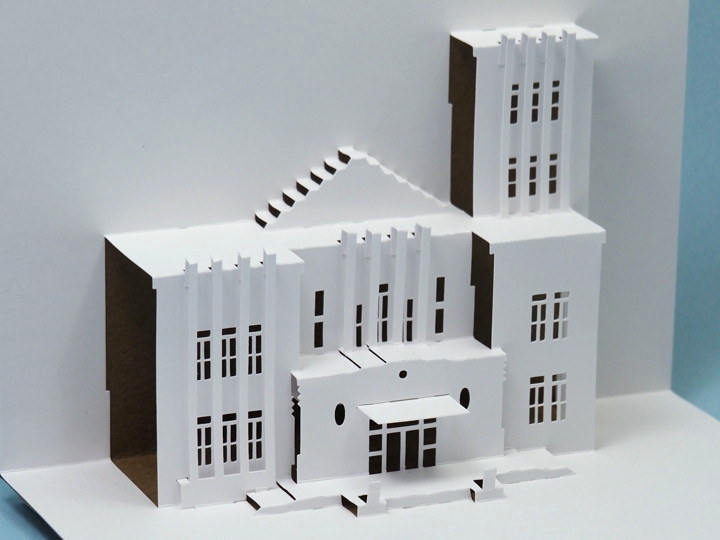
I think I have gotten much closer to the atmosphere of the actual building.
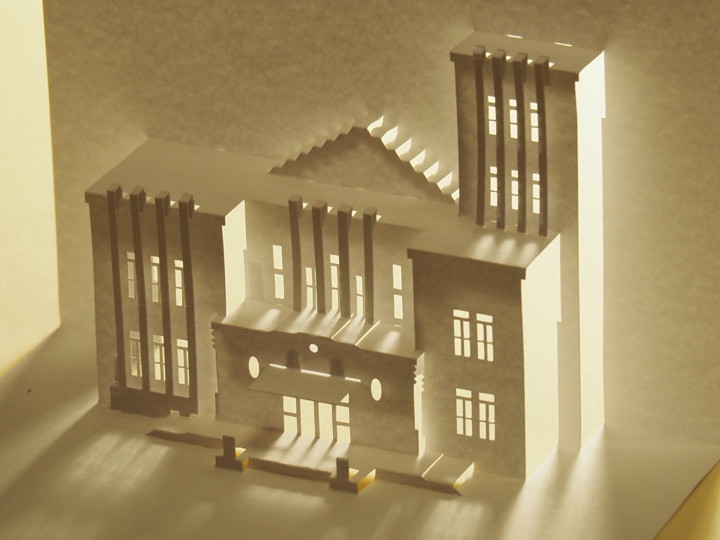
After researching the public hall again, I wanted to see the actual building. Now that the Hokuriku Shinkansen line has been extended, I would like to go see it someday. Currently, the building is operated as a museum, where permanent and special exhibitions are held.
There is also a guest room that recreates the atmosphere of those days.
[Postscript] (2024.03.31)
The pattern (one sheet type) was uploaded.
[Reference]
“History of Takefu City: An Overview" (Takefu City History Compilation Committee, Takefu City, 1976).
“Takefu Fudoki Sequel" (Compiled by Takefu Fudoki Compilation / Takefu City Cultural Council / 1979)
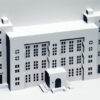
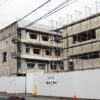
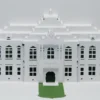
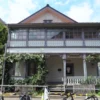
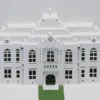
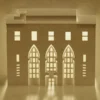
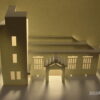
Discussion
New Comments
No comments yet. Be the first one!